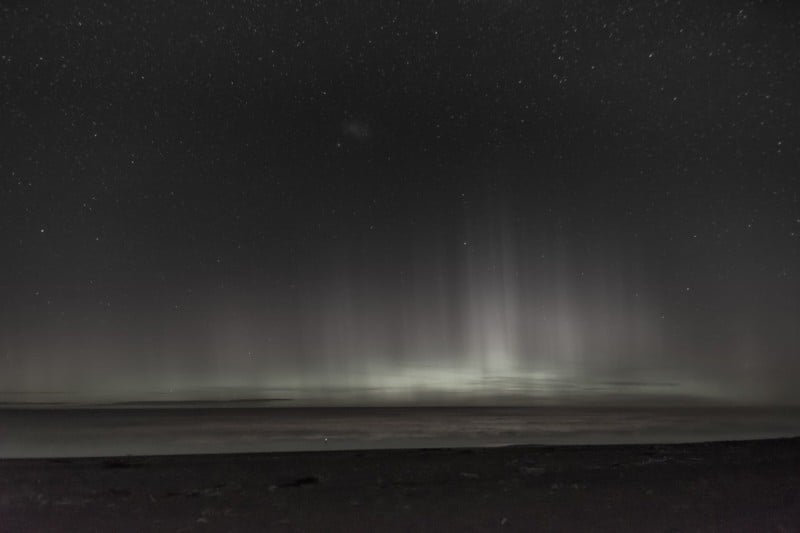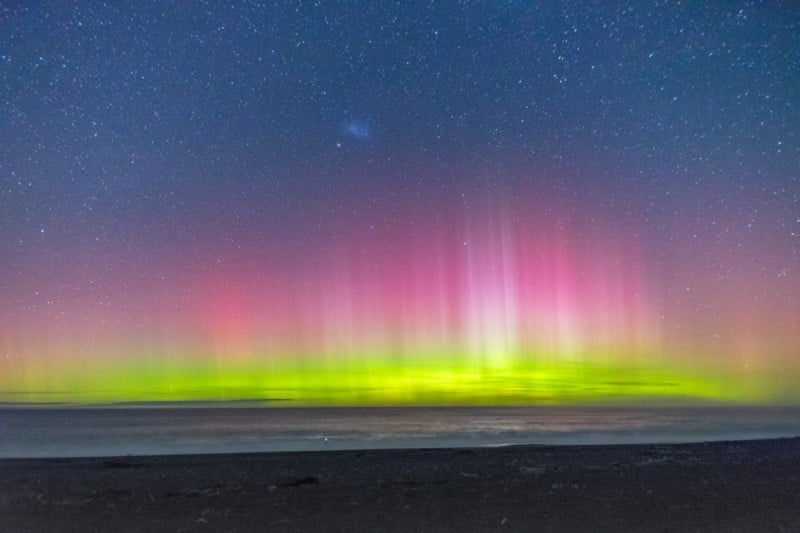Aurora Photos: Reality vs. Expectation
![]()
We just had a beautiful Aurora Australis hit New Zealand recently. I was fortunate enough to catch a quiet spot to myself where I could take in the atmosphere and shoot a few images.
![]()
The frenzy that started with a few keen astronomers and astrophotographers led to a lot of people rushing to similar spots the night after to see if they can watch the aurora. Unfortunately, there were a few disappointed folk who not only couldn’t find a clear view, but also didn’t realize what you see in photos isn’t what you see with the naked eye.
I want to take this opportunity to try to explain the difference between what you see with the naked eye vs what the camera picks up and what subsequently gets shared on social media. To get a full understanding, let’s start with some basic biology.
The human eye
Our eyes are made up of two main photo-receptor cells – these are the cells that are responsible for picking up light and helping us to see. Cones are fantastic at picking up details and color but they are pretty useless in dark situations. Rods, on the other hand, are able to process a lot more light BUT are not able to process colors and details too well.
The result is that in the dark we tend to see things in monochrome/black & white.
Rods also take some time to “activate.” That is, when you walk from a light room into a dark room it takes a while for your eyes to adjust and get used to the dark scene. At first, you might not see anything but after 10 or 15 minutes it’s much easier to see in a darker environment. However, as soon as something bright gets shined into your eyes (like a torch or even a mobile phone screen) the rods shut down and the cones take over. When you look back into a dark space you have let the rods re-activate all over again, meaning you have to wait another 10-15 minutes or so.
What does this mean for aurora spotting?
Why does this matter? Well, for starters, unless you’re in a really bright space, like within the polar circles, the likelihood of you seeing enough brightness from an aurora so that you see color is quite low. You may see some faint glows but not the vibrant, bright colors like I have in my photo above.
Secondly, if you are flashing your torch around or constantly looking at your phone you will be very unlikely to allow your eyes to adjust to the darkness. Astronomy and aurora spotting in particular require patience, something I know I’m not very good at, but it takes discipline. If you do need light then think about getting a red torch light — it affects your eyes far less than bright white light.
What does it look like to the naked eye?
Here’s the best I could do to try to simulate the difference between what you see once your eyes have adjusted:


If you just turn up and stick your head out of the door of the car you will likely not see much at all, but after a little while in the darkness you could see the structure, light and movement, but very little color. The night I was out I could see a faint green glow and that’s about it. If you have a DSLR and a tripod you can get significantly more light information. What I typically do when I get to a nice spot is set my camera up, take a quick test shot and use that to gauge if there’s any action.
The most exciting thing about the aurora is that it does move around in the sky. So, you could well see movement even if you don’t see color. Here’s a timelapse from the other night for those that are interested:
Conclusion and etiquette
Basically, if seeing the aurora is on your bucket list then absolutely go and do it, but make sure your expectations are tempered. If you are close to the poles you will get far, far more light, color and movement. But, if you’re further away from the poles, then the best you’ll likely get is some awesome pillars of light dancing back and forth but nothing like you see in photos.
About the author: Ekant Veer is a photographer based in New Zealand. You can find more of his work on his website and Facebook. This article was also published here.